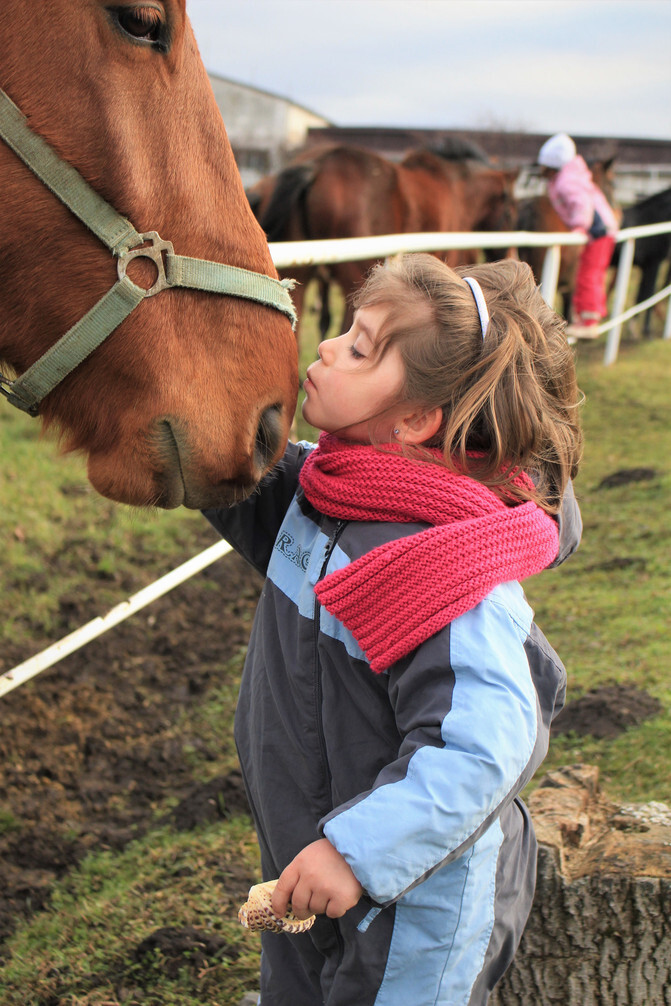Boundless Ranch: 6 ways to safely become a habit during horse racing
In equestrian sports, one of the first principles remains safety, but even the most experienced equestrian athletes may have trouble teaching children the fine lines between fear and caution, so here are six simple habits that will help prevent injuries during riding and make the horse world a safer place.
1. Respect your limits
People tend to be overconfident, especially around animals. We are proud of our intelligence and forget that horse brains don't work like ours. But the horse was humble. Just when we think we can predict their behavior, they often prove us wrong.
That's why when you work with horses, it's important to understand your limitations-physical, mental and emotional-preferably under the supervision of a qualified coach. For example, when brushing a horse, you learned to position your body relative to the horse; pay attention to which behavioral signals and what they mean; and how to move smoothly and calm him down with your voice.
Respect your instincts and be true to your limits. Everyone's skill level is very different. A coach with a thousand hot horses under his belt would treat them differently than a part-time rider who had just learned about his first ride. Do what is safest for you at your level.
2. Always use harness
The reins give you some control, but more importantly, they remind the horse to remember his demeanor. When horses are not saddled, bouncing, backing, running and kicking are usually allowed as a form of competition. They learned that such activities were unacceptable.
Sometimes we hurriedly pulled the halter's headdress over the horse's ears, but did not break the throat. Or we wrap the halter around the horse's neck and tie it behind his head with the nose strap hanging down. These practices also put us at risk. An extra five seconds of properly fixing the halter can avoid injury.
3. stay focused
Your horse is paying attention to the environment, even if you are not. If something goes wrong, his instincts will get him out of the harm in the blink of an eye. Pay attention to the horse's hints and see if there may be any problems-strained neck muscles, raised head, swish tail. He warns you of possible danger... Make sure you are listening.
You should also pay attention to yourself. If you are in a hurry, depressed, hungry or tired, change your plan. Horses do understand human emotions. They become nervous because we are nervous, resisting or angry.
4. Pay attention to the ground foundation
Horses have an extraordinary ability to cross the worst of the terrain. But they have their limits, and in fact, they always slip in muddy conditions. You will get hurt, and your horse will probably get hurt.
Except for mud or ice, stay away from heavy equipment lying on the ground. If something goes wrong, you can land on it. Although jumpers require jumps and barrel runners require barrels, unnecessary equipment should be moved out of the arena and away from the trails.

5. Special care for young children
Do you want your children or grandchildren to learn to ride? If you want, hire an experienced coach who ensures safety. Also, for most children 6 or younger, use wires so that they are close at hand.
Pay attention to children for signs of boredom, fatigue or fear. Students who are afraid or sleepy cannot learn well. Riding quickly like a jogger may tire out your child's muscles until he suddenly falls off without warning. He didn't know enough about his body to be sure when to stop. They perform better when they are full of energy and clarity!
6. Put on your boots and helmet
This is the easiest of all safety tips. But do it.
Previous Article:Jufuge Villa Farmhouse in Lishugou, Shilin Gorge, Pinggu, Beijing, has only 150 accommodation per person and three meals
Next Article:Guyaju Travel Notes
